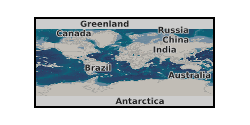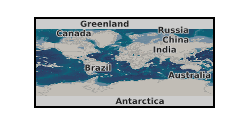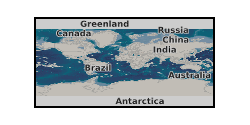X ray analysis
Type of resources
Topics
Keywords
Contact for the resource
Provided by
Years
Formats
Update frequencies
-

The datasets contains two sets of three dimensional images of Ketton carbonate core of size 5 mm in diameter and 11 mm in length scanned at 7.97µm voxel resolution using Versa XRM-500 X-ray Microscope. The first set includes 3D dataset of dry (reference) Ketton carbonate. The second set includes 3D dataset of reacted Ketton carbonate using hydrochloric acid.
-

This dataset contains 10 three dimensional x-ray tomographic images of CO2-acidified brine reacting with Ketton limestone at a voxel size of 3.8 microns. It includes the unreconstructed projections (.txrm), the reconstructed images (.txm), and the masked and cropped segmented images (.am and .raw). The rock was imaged during dissolution 10 times over the course of 2.5 hours. Details can be found in Menke et al., 2015 in the journal Environmental Science and Technology.
-

The datasets contain time-resolved synchrotron X-ray micro-tomographic images (grey-scale and segmented) of multiphase (brine-oil) fluid flow (during drainage and imbibition) in a carbonate rock sample at reservoir pressure conditions. The tomographic images were acquired at a voxel-resolution of 3.28 µm and time-resolution of 38 s. The data were collected at beamline I13 of Diamond Light Source, U.K., with the aim of investigating pore-scale processes during immiscible fluid displacement under a capillary-controlled flow regime. Understanding the pore-scale dynamics is important in many natural and industrial processes such as water infiltration in soils, oil recovery from reservoir rocks, geo-sequestration of supercritical CO2 to address global warming, and subsurface non-aqueous phase liquid contaminant transport. Further details of the sample preparation and fluid injection strategy can be found in Singh et al. (2017). These time-resolved tomographic images can be used for validating various pore-scale displacement models such as direct simulations, pore-network and neural network models, as well as for investigating flow mechanisms related to the displacement and trapping of the non-wetting phase in the pore space.
-

A laboratory µ-CT scanner was used to image the dissolution of Ketton, Estaillades, and Portland limestones in the presence of CO2-acidified brine at reservoir conditions (10 MPa and 50 °C) at two injected acid strengths for a period of 4 h. Each sample was scanned between 6 and 10 times at ~4 µm resolution and multiple effluent samples were extracted. See also paper: H.P. Menke et al. Geochimica et Cosmochimica Acta 204 (2017) 267-285. https://doi.org/10.1016/j.gca.2017.01.053.
-

The datasets contain FIB-SEM and X-ray micro-tomographic images of a wettability-altered carbonate rock sample before and after dissolution with reactive CO2-saturated brine at reservoir pressure and temperature conditions. The data were acquired with the aim of investigating CO2 storage in depleted oil fields that have oil-wet or mixed-wet conditions. Our novel procedure of injecting oil after reactive transport has revealed previously unidentified (ghost) regions of partially-dissolved rock grains that were difficult to identify in X-ray tomographic images after dissolution from single fluid phase experiments. The details of image files and imaging parameters are described in readme file.
 NERC Data Catalogue Service
NERC Data Catalogue Service